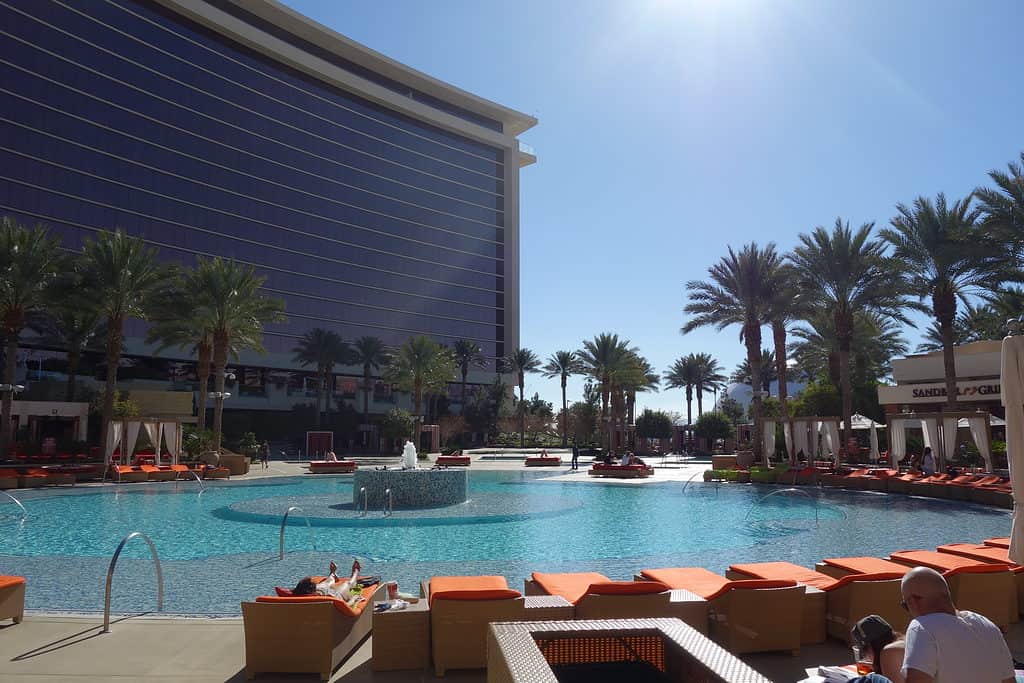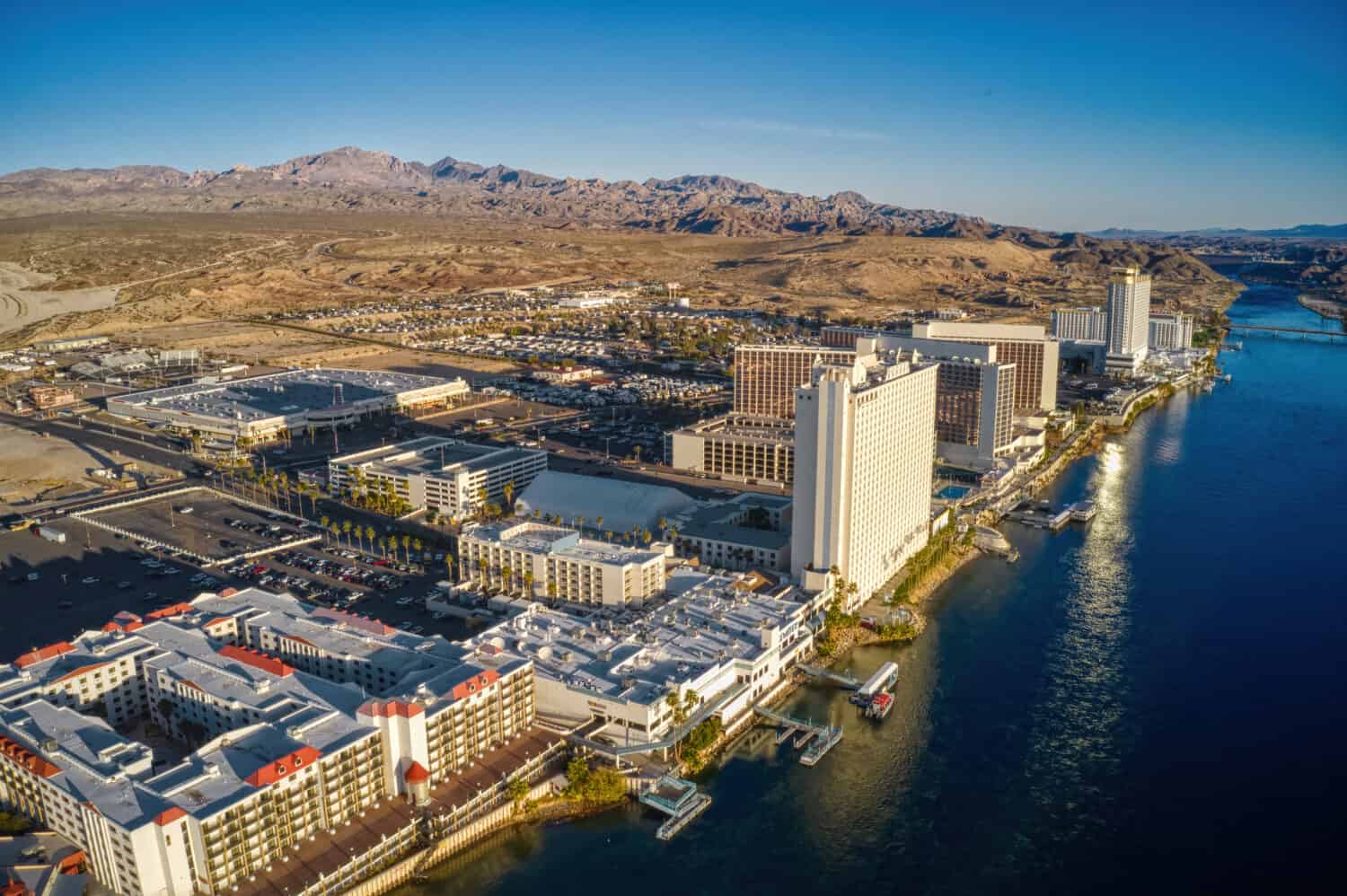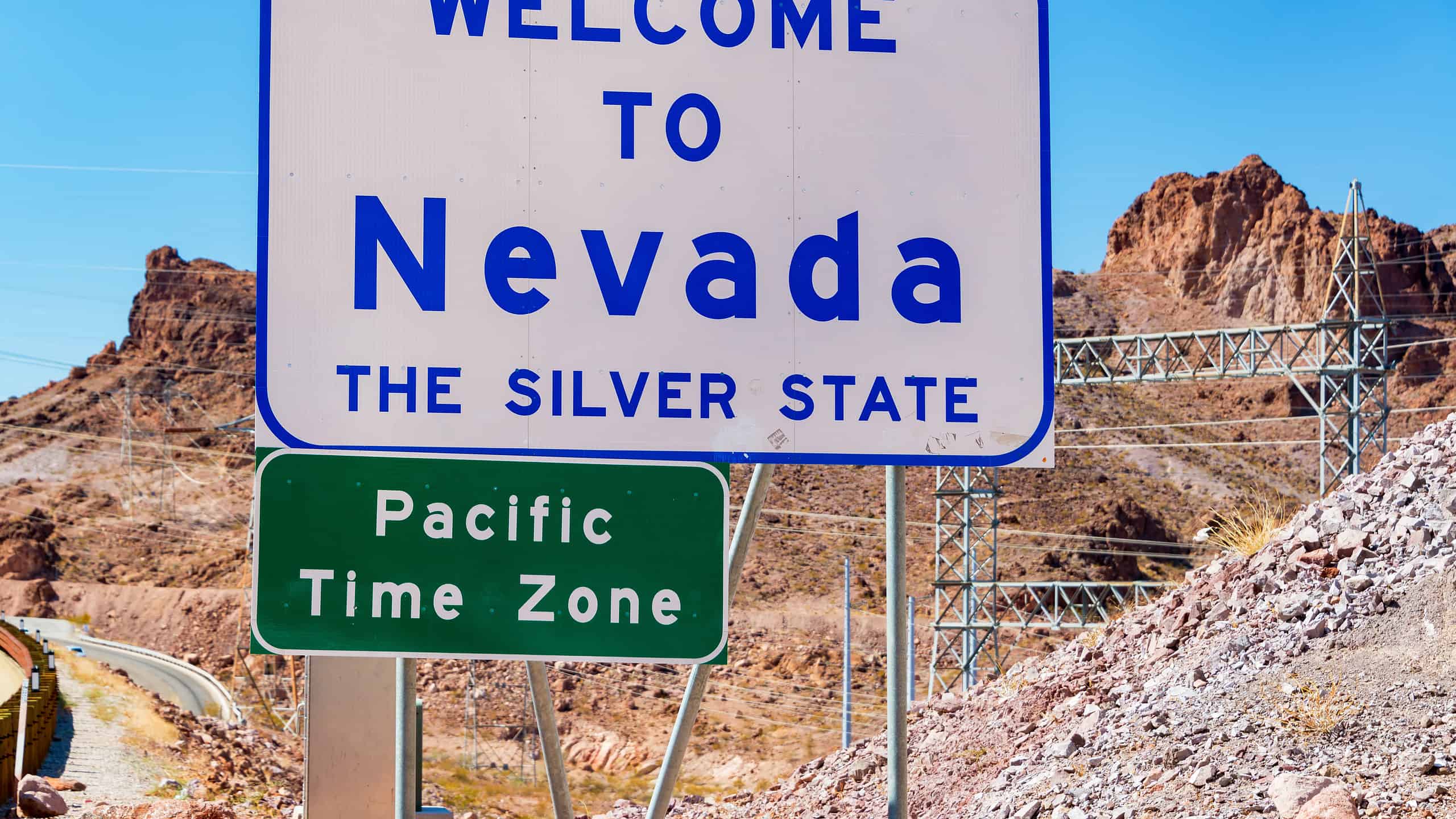Nevada is one of the largest states in the country, but it is often defined by a relatively small portion of it. That area, of course, is Las Vegas and its surrounding desert. It is no secret that Nevada experiences blazing hot summers. However, one area gets hotter than all the rest. Take a look at the absolute hottest place in Nevada and find out where it is located, how hot it gets during summer, and the animals that live in the region.
For the sake of clarity, the measure for the hottest place in the state comes from the area that experiences the highest average temperature in the state’s hottest month.
The Climate in Nevada

Nevada is known for its hot, dry climate.
©https://www.flickr.com/photos/kennejima/11301538796/kennejima/CCBY2.0 – Original / License
Nevada is the driest state in the U.S., averaging 10.2 inches of rainfall per year. The Köppen-Geiger climate classification for the region is mostly cold, semi-arid (BSk). That means the area has dry and cool winters along with hot summers. The regions in this climate type tend to be located at higher elevations than the hot, semi-arid climates.
Nevada is primed to achieve high temperatures in many parts of the state, especially the southernmost areas. After all, Las Vegas, renowned for its heat, is in the southern part of the state.
Meanwhile, Death Valley National Park creeps along the border to the west of the state. Furnace Creek in Death Valley experienced the hottest air temperature ever recorded in the country, and possibly the world. Interestingly, the location with the hottest temperatures in the summer months is not located in the southwest of Nevada.
What Is the Hottest Place in Nevada?

The hottest place in Nevada is Laughlin, located along the Colorado River.
©Jacob Boomsma/Shutterstock.com
The hottest place in Nevada is Laughlin, a city with an average high temperature of 109.8 °F throughout July. The month of July is by far the hottest in the state, followed by August. This part of Nevada is exceptionally hot, yet the town still boasts a population of nearly 9,000 people.
The town experiences tremendous heat throughout the year. The average high during the summer months exceeds 100 °F every month. The following chart shows the average high temperatures during the summer in this city.
| Month | Average High Temperature |
|---|---|
| June | 105.5 °F |
| July | 109.8 °F |
| August | 108.4 °F |
| September | 101.9 °F |
This region is brutally hot during the summer months. Several factors contribute to the heat in this region including its location in the Mojave Desert along with its relatively low elevation of 558 feet. On average, this city is about 3 to 5 °F warmer than Las Vegas which is located about 70 miles away. The hottest temperature recorded in the city was 125 °F on July 29, 1994.
The climate in Laughlin is considered a hot desert, a Köppen-Geiger climate classification of BWh. The area gets less than six inches of precipitation throughout the entire year. Furthermore, the region often sees temperatures above 110 °F.
Where Is Laughlin Located on a Map?
Laughlin is an unincorporated community with about 9,000 residents as of 2020. The town is located in the southernmost part of the state along the border with Arizona and California. Finding this city on a map is not that difficult since it is southeast of Las Vegas.
A person could travel from that major city using U.S. Route 95 before transferring to Nevada State Route 163 to travel farther east. Laughlin is bordered by the Colorado River and Arizona to the east, and California to the west.
People travel to this city to take part in fishing trips, and they also come to enjoy the numerous casinos that line the Colorado River’s banks.
What Was the Highest Temperature Ever Recorded in Nevada?

The hottest day in Nevada happened in 1994.
©VladisChern/Shutterstock.com
The highest temperature ever recorded in Nevada was a blistering 125 °F. The temperature record was set on July 29, 1994, near Laughlin, Nevada. Laughlin is in the southernmost reaches of Nevada on the border with Arizona as well as California.
The city is very hot throughout the summer months, but it has managed to attract many residents due to the recreation available in the area. The hottest temperature in Nevada is one of the highest recorded in the United States. However, it lags behind the hottest temperature in California where the temperature once rose to 134 °F.
What Animals Live Near Laughlin?

Desert bighorn sheep have adapted well to the hot climate around Laughlin.
©iStock.com/Rainbohm
The brutal heat and climate in the region make it difficult for animals to survive near Laughlin. However, life always finds a way to thrive. Some animals live on the land near Laughlin while others swim in the nearby river.
Consider a few of the terrestrial animals that a traveler may find near the town, such as:
- Raccoons
- Skunks
- Bighorn sheep
- Desert cottontails
- Coyotes
- Donkeys
- Mojave Desert tortoise
- Gopher snake
- Southwestern speckled rattlesnake
A wide variety of animals live in this part of the state, and they can survive when the temperatures spike. Moreover, the Colorado River below the Davis Dam has a wide assortment of different fish that people can catch. These include:
- Largemouth bass
- Bluegill
- Redear sunfish
- Channel catfish
- Black crappie
During the hottest temperatures, these fish would seek cover and deeper waters to stay cool. They may also adjust their feeding habits to meet their needs. These are just a few of the fish that anglers seek when they go fishing in the nearby waters.
The hottest place in Nevada happens to be the southernmost part of the state rather than the area near Death Valley National Park. This region has average high temperatures near 110 °F during July, much hotter than most places get all year. While the area may seem inhospitable, many animals successfully live in the area even if they need unique adaptations.
Thank you for reading! Have some feedback for us? Contact the AZ Animals editorial team.








